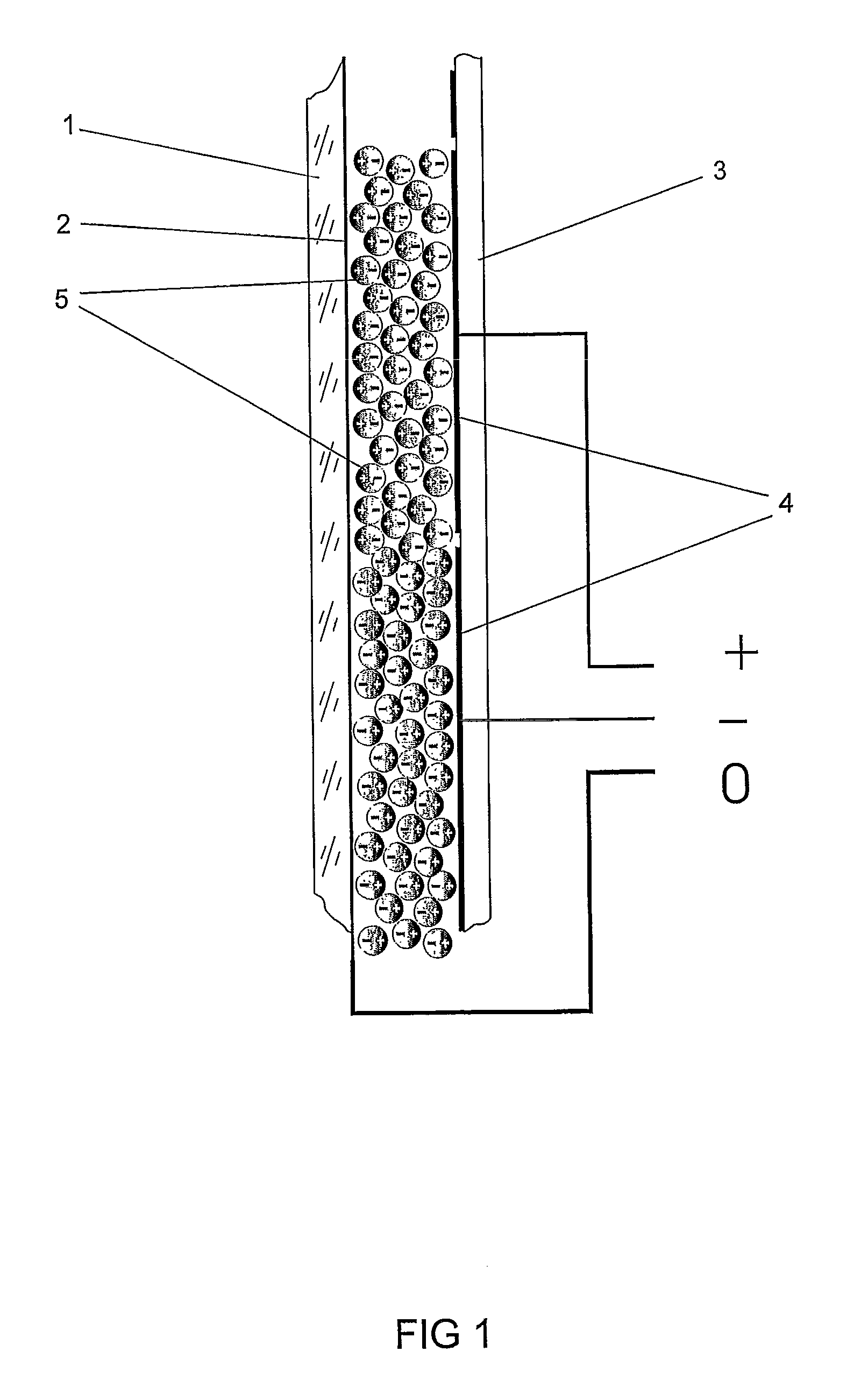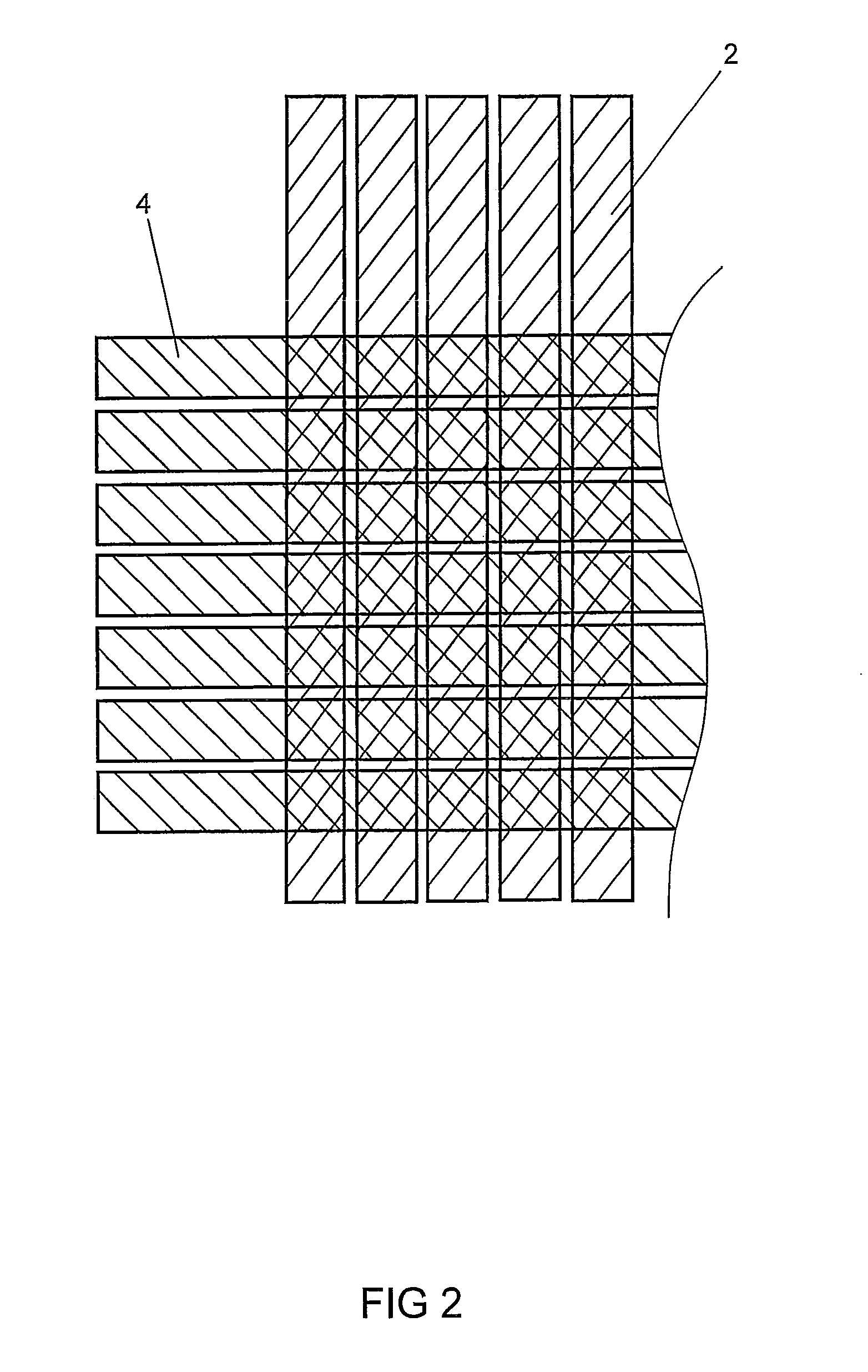Active optical element, method of producing the same
a technology of optical elements and optical elements, applied in the field of active elements, can solve the problems of low contrast level, slow reaction time, low viewing angl
- Summary
- Abstract
- Description
- Claims
- Application Information
AI Technical Summary
Benefits of technology
Problems solved by technology
Method used
Image
Examples
embodiment 1
Method 1 of Producing Active Element Based on Present Invention
[0025]For creating an active element based on the present invention a non-polymerized electret material (for example Teflon) is mixed with photochromal pigment (for example with pigment that will decolour / bleach in UV radiance). The resultant mixture is emulsified in a suitable non-blending same density neutral liquid, for example in fluorine-carbon. The mixture will be subjected to a controlled pressure and temperature, which will polymerize the particles in the electret liquid but not the environment. The resultant mixture is then subjected to a high electric field at high temperature and will be chilled in it (for example in a thin pipe where the mixture flows, that enables continuous and high volume production of the emulsion), so the particles will acquire an electric charge.
[0026]The electrically charged particles is then subjected to high UV radiance in a transparent pipe and a polarizing electricity field that ca...
embodiment 2
Method 2 of Producing Active Element Based on the Present Invention
[0029]In this embodiment instead of polymerization of liquid monomer easily melting electrets are used (for example waxes) to get an active element. Electrets used will be emulsified in melted condition in carrier liquid (in neutral liquid, for example in fluorine carbon).
[0030]The emulsion created is subjected to a high electric field at high temperature and is chilled in it (for example in a thin pipe where the mixture flows) so the particles will acquire an electric charge.
[0031]The particles with electric charge are subjected to a high UV radiance in a transparent pipe and polarizing electricity field that causes their one pole to change colour.
embodiment 3
Method 3 of Producing Active Element Based on the Present Invention
[0032]This embodiment creates an electret material double layer film that has sides with different colours as an alternative way to get an active element. The film is heated in transverse high direct current electricity field and chilled in temperature where the material of the film will acquire stabile polarization crossways to the surface. One side of the resultant film will be with one polarization and the other has opposite polarization. The film will be cut into very small pieces; to create spherical particles the pieces are burnished in a ball mill or soft moulded; the pieces will be mixed to a liquid environment with same density using suitable emulsifiers if needed.
[0033]An active element that is created according to the methods in present invention is based on electret emulsion wherein it contains pre-polarised and pre-coloured micro particles of electret material in neutral liquid as emulsion and each elect...
PUM
 Login to View More
Login to View More Abstract
Description
Claims
Application Information
 Login to View More
Login to View More - R&D
- Intellectual Property
- Life Sciences
- Materials
- Tech Scout
- Unparalleled Data Quality
- Higher Quality Content
- 60% Fewer Hallucinations
Browse by: Latest US Patents, China's latest patents, Technical Efficacy Thesaurus, Application Domain, Technology Topic, Popular Technical Reports.
© 2025 PatSnap. All rights reserved.Legal|Privacy policy|Modern Slavery Act Transparency Statement|Sitemap|About US| Contact US: help@patsnap.com



